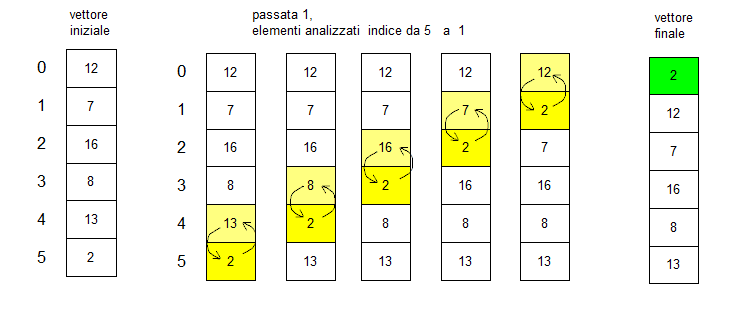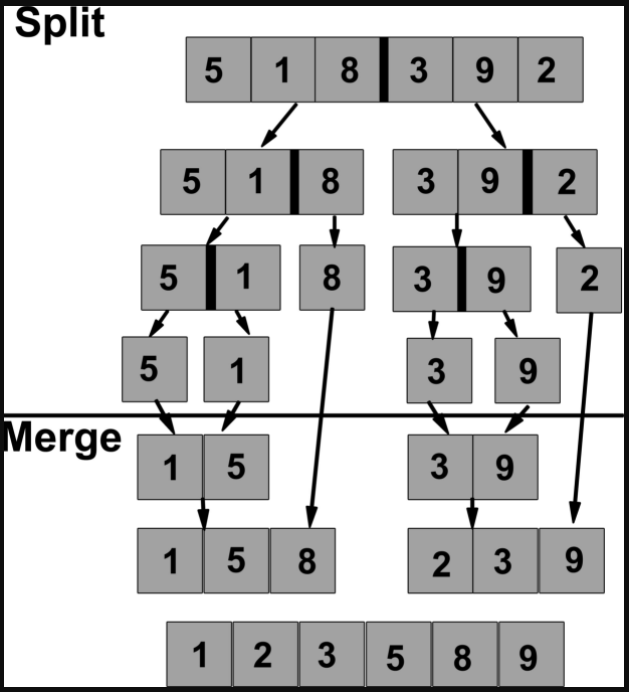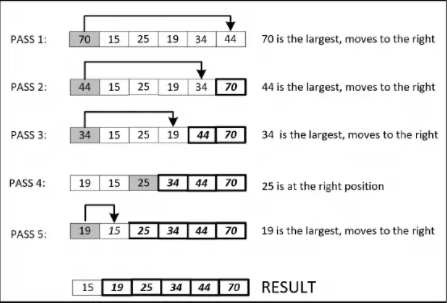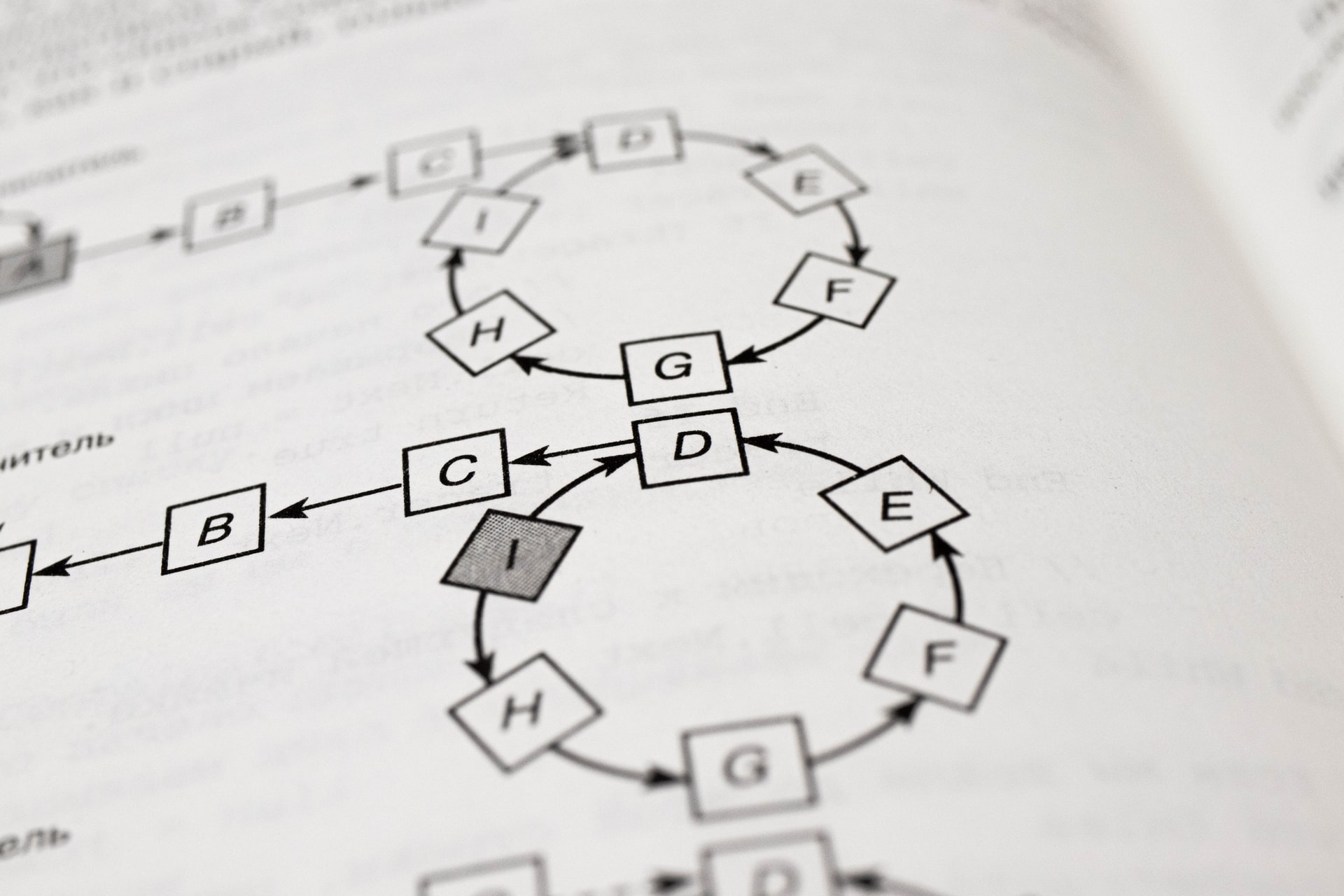Introduction
It’s essential to learn about different algorithms, whether you’re an expert programmer or a student eager to refresh your knowledge. But learning about different algorithms and consuming data is a bit tricky. Today we’re going to make it simple for you. A clear understanding of algorithms helps solve real-world problems with ease. It’s a must-have skill for every programmer.
According to Oxford Advanced, Learner’s dictionary algorithm means “a set of rules we must follow to solve a particular problem.” An algorithm is a finite set of unambiguous instructions that we perform in a prescribed sequence to achieve a certain goal. It has a recognizable set of end conditions.
The aspects of Algorithms that will be explained later in this article are as follows:
Algorithm Types
Sorting Algorithms
Bubble Sort Algorithm
- The logic behind Bubble Sort Algorithm
- Performance of Bubble Sort
Insertion Sort Algorithm
- The logic behind Insertion Sort Algorithm
- Performance of Insertion Sort
Merge Sort Algorithm
- The logic behind Merge Sort Algorithm
- Performance of Merge Sort
Shell Sort Algorithm
- The logic behind Shell Sort Algorithm
- Performance of Shell Sort
Selection Sort Algorithm
- The logic behind Selection Sort Algorithm
- Performance of Shell Sort
Searching Algorithms
Linear Search Algorithm
- Performance of Linear Searching Algorithms
Binary Searching Algorithms
- Performance of Binary Searching Sort
Interpolation Searching Algorithms
- Performance of Binary Searching Sort
Conclusion
Algorithms are like mathematical recipes that can solve a problem in the most efficient way possible. We can further refine them to solve a more comprehensive set of similar issues. A good software developer must know how to pick one appropriate to the specific situation.
Here are algorithms a programmer must know.
Algorithm Types
Though there are thousands of algorithms, we will discuss the main two types.
- The sorting algorithms.
- And the searching algorithms.
This class of algorithms serves as a foundation as they are the building blocks of more complex algorithms. Their understanding helps the programmer to deepen his knowledge and apprehend complex problems.
Sorting Algorithms
What do you think how you will get results by applying different filters to sites like Amazon. Sorting data is crucial in the field of computer science. Especially, efficient sorting of big data and getting the required results is essential. Many modern algorithms need this ability. The proper ability depends on the size and type of data. We use many algorithms to sort out data. A clear understanding of their different types helps choose the correct algorithm for solving a real-world problem.
Bubble Sort Algorithm
The bubble sort algorithm is the slowest and is suitable for sorting smaller datasets. In this algorithm, the highest value(for ascending order) bubbles away to the top for each iteration until the whole dataset gets in order. Its worst-case performance is O(N^2).

Image: Creative Common Licenses
The Logic behind Bubble Sort Algorithm
Bubble sort consists of iterations called passes. For a list of the size of N, the number of iterations is N-1. Now consider the first iteration.
As the loop progresses, the goal is to push the highest value to the top. It compares adjacent neighbor values. Bubble sort exchanges adjacent values of two passes if the value in the lower index is greater than the value at a higher position. This process continues until we reach the end of the list.
Performance of Bubble Sort
The bubble sort operates in two loops.
We also call outer loop passes; for example, pass one is the first iteration of the outer loop. While in the inner circle, the remaining unsorted elements get in order. The first pass is N-1, and each remaining pass decreases in the same manner by 1.
Due to two loops, the bubble sort worst-case complexity is O(N^2).
Insertion Sort Algorithm
The insertion sort algorithm is suitable for small datasets due to its average quadratic performance. It is just like how we arrange playing cards. We can put in place it in C, Java, and Python. Its worst-case performance is also O(N^2), but it is more efficient than the bubble sort algorithm.

Image: Creative Common Licenses
The logic behind Insertion Sort Algorithm
The logic behind the insertion sort algorithm is simple. It removes a data point from N number of points in the list. After removing the number, it sorts the number to the correct position according to its value. Then it removes the 3rd datapoint and sorts it. This process continues until it sorts all the data points on the list.
Performance of Insertion Sort
As insertion sort is flexible in its response, it can even sort an incomplete list of data points. Also, we can add more data points during the process of sorting. If the list is already sorted, insertion sort gives results instantly, and its run time becomes linear O(n). the worst case appears when the inner loops have to move all the elements to the list. In that scenario, its performance is O(N^2). Let’s denote the inner loop by I then;

Image: academia.edu
Merge Sort Algorithm
We can get better performance of the above-discussed two algorithms if we have partially sorted data. Considering this point, scientist John Von Neuman introduced a third algorithm merge sort in 1940. The benefit of this algorithm is that its performance does not depend on the sorting of input data.

Image: Creative Common lisences
The Logic behind Merge Sort Algorithm
The merge sort algorithm uses a drive and conquers strategy. The first step of the merge sort algorithm is to split the data into subclasses. This splitting occurs recursively until its size is smaller than the defined threshold. The size is 1. It picks the sorted parts, merges them into the sorted list, and returns the result.
Performance of Merge Sort
Merge sort is a stable algorithm with O(n log) performance. It remains the same for the worst case as well. We usually use merge sort to sort linked lists.
Shell Sort Algorithm
Shell sort has a close resemblance with insertion sort. You can say it is a generalized insertion sort algorithm. It sorts elements far away from each other, so sorting such data points involves many movements.

Image: stoimen.com
The Logic behind Shell Sort Algorithm
The shell sort algorithm questions the importance of selecting the immediate neighbors in bubble sort. It chooses data points that have a fixed gap and sorts them. In the next pass, it picks two more data points and repeats the sorting process. Data points per sublist are increasing while the number of sublists is decreasing. We reach a point where we get the final sublist containing all the elements.
Performance of Shell Sort
The shell sort is suitable for medium-sized data. It has pretty good performance for datasets that consist of up to 6000 elements. Data already in the sorted form requires just a single pass of shell sort and has performance O(N).
Selection Sort Algorithm
Programmers prefer selection sort if they have limited auxiliary memory. Although it is inefficient for larger datasets, it usually performs better for a simple bubble sort operation.

Image: academia.edu
The Logic behind Selection Sort Algorithm
Instead of taking baby steps in bubble sort, we use selection sort to move the most significant value to the top in each pass. After the first pass, we move 2nd most significant value to the next first largest value, and the process continues in the same manner. We carry the last value in the (N-1)^th pass.
Performance of Shell Sort
Its performance is like the bubble sort, and we denote it as O(n^2). But due to a reduction in the number of exchanges, its performance is better than bubble sort. We cannot use it for large datasets.
Searching Algorithms
We find it challenging to search data, especially from a large structure. We need sophisticated algorithms to get the job done.
Following are searching algorithms that help us to explore data with ease.
Linear Search Algorithm
Linear search works on the simplest possible mechanism looping through each element to search for the target. It checks each datapoint. When the algorithm finds a match, it exists in the loop and gives the resulting output. It is prolonged as it takes a lot of time to search each datapoint. The main advantage is that there is no sorting of data in it.
Performance of Linear Searching Algorithms
It is a simple but lengthy algorithm. Its worst-case behavior is O(n).
Binary Searching Algorithms
It requires sorted data as a pre-requisite. The binary searching algorithm keeps diving and checking for upper and lower indices until it finds the target value. Since data is already in the sorted form, it compares the value with the middle one. Returns results if value matches with middle else, compare it with right or left side according to its value.
Performance of Binary Searching Sort
It bifurcates data into two halves at each iteration. Its performance is O(logN) for N items. It means it takes O(logN) runtime.

Interpolation Searching Algorithms
The binary search focuses on the middle value. The logic of interpolation search basis on the human instinct to find the data from uniformly ordered datasets. It estimates the exact value of the word that we need to see. For example, suppose we’re looking for the word” programming” in the English dictionary. In that case, it starts searching the terms beginning with “R.”
Performance of Binary Searching Sort
Its performance is poor for the uneven distribution of data. Its worst-case performance is O(n), but if data is uniform, then its performance is O(log( log n)). Better to use a sorting algorithm before applying an interpolation search algorithm.
Conclusion
A proficient understanding of different algorithms is necessary. It helps to understand the relationship between programming and algorithms. Successful programmers know their strengths, weaknesses, and appropriate use. Sorting and searching algorithms form the basis for more complex problem-solving.
If you’re looking for skilled programmers who understand algorithms and their use in building your business and projects, we at Mpire Solutions offer dedicated and top-notch software development services.
Our experts have a keen eye for the latest business trends and innovations in technology. We strive to provide customized and proven strategies. Get in touch with us to build your future!
 HubSpot Consulting Needs
HubSpot Consulting Needs  Custom Automation Plan
Custom Automation Plan 












